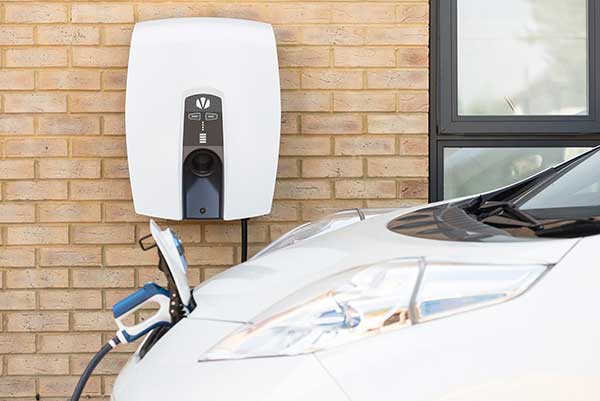How to generate and store your own energy: solar panels, home batteries and more

Tired of worrying about soaring energy bills or want to reduce your carbon footprint? We look at the various ways you can generate and store your own energy, whether you can save money doing so and the costs involved.
The development of more innovative technology means there are now many ways you can generate and store energy in your own home.
Mixergy, for example, offers a hot water tank that allows you to heat exactly the amount of water you need, boosting delivery times by ensuring it is quickly heated.
You can use renewable energy sources, including solar panels, to heat the hot water tank, with excess energy being stored in a battery (approximately eight to nine kilowatt hours' worth depending on size, but you can store as much as you like with other tanks).
Using Mixergy, you can avoid buying energy from the grid and the company claims using its hot water tank could save you up to 20% on hot water bills.
Of course, innovation comes at a price as a Mixergy tank will set you back at least £1,000. The overall price depends on the size of the tank and heat source, so you’ll need to get a bespoke quote.
Now, we don’t only consume energy, but we can also store it and possibly sell it back to the grid if we choose to.
So, how else can your home generate and store its own energy?
Best and worst energy firms revealed: how to switch if you're unhappy
Solar panels
Sadly, installing solar panels isn't as profitable as it once was.
That's because the Government’s Feed-in Tariffs (FIT) scheme, where people received payments from their energy supplier for generating their own electricity, was closed to new applicants in 2019.
At the moment, you may be able to get paid for any extra energy you generate by using a tariff via the likes of Octopus Energy, although this is a beta product, so it could change.
There are other ways you can sell extra energy, as well as store it for future use (the latter of which will be covered later on).
For example, the Smart Export Guarantee (SEG), which launched in January 2020, has replaced FIT – and you’ll only be able to get tariffs for the renewable energy you don’t use.
It guarantees that people installing solar panels will be paid by energy suppliers with over 150,000 customers.
We don't know exactly how much energy companies have to pay out, although GreenMatch says you can currently get between 2p and 5.6p per kWh.
Sadly, the SEG scheme is less generous than the former FIT scheme - so it's hard to say right now whether solar panels are a good idea from a purely financial perspective – especially as they don't come cheap.
According to MoneySavingExpert, solar panels on average cost £4,800. While solar panels are expensive, the cost has declined over the last few years.
If you’re thinking about getting solar panels installed and want to know about the potential costs and benefits, this calculator from the Energy Savings Trust can shed a little more light on the matter.
It's worth flagging solar panels don't necessarily require storage and you can re-evaluate how you use your energy.
There are simple things you can do when generating solar power during the day, when this energy is technically free.
This includes putting on a washing machine or a dishwasher, heating up hot water or putting on central heating if your house is well insulated.
You could even charge an electric car during the day by using a charger that only uses surplus power such as Zappi.
As we'll cover in the sections that follow, there is a lot you can do with unused solar energy.
Why solar panels could make selling your home difficult

Tesla Powerwall
Tesla’s Powerwall is a home battery that lets you store solar energy and power your home through the day (depending on your usage).
The device can store 13.5kWh and you can fit more than one, based on your energy needs.
Any excess solar energy made during the day is stored and can be available on-demand in the evening.
One of the benefits of using Powerwall is that it can detect an outage, disconnect from the grid and restore power almost instantaneously, so you won’t even notice that the power went out.
If you use solar power and Powerwall, the former will continue to power your home and recharge the device.
Without Tesla’s device, solar power will shut down during an outage according to the company.
Tesla estimates you can get seven days of continuous power (when using solar) during an outage, which accounts for the occasional cloudy day that could impact solar production.
It's a great idea but comes with an eye-watering price tag: you’ll have to fork out around £8,700 for the device, supporting hardware, equipment and delivery.
Your final bill may be even higher as the final design is based on your electrical panel, daily energy usage, number of Powerwalls bought and where you want it to be installed.
So, this one probably doesn't make sense if you're solely looking for money-saving ideas.
Elon Musk: the incredible story of the world's most maverick billionaire

Ovo vehicle-to-grid charger
Ovo has recently completed an energy trial, which looked into how an electric car battery can serve as a home battery of sorts and pump energy back into the grid (or home).
Ovo said it would pay participants 26p per kWh sold back to the grid (measured by a smart meter) if they have solar or other microgeneration systems – a small scale system that generates electricity or heat – installed.
If they don’t have any form of microgeneration at their property, they would be paid 30p for every kWh sold to the grid.
Ovo also recently did a vehicle-to-grid trial combining the Nissan LEAF or Nissan e-NV200 with its V2G charger, which it said could save users up to £570 a year.
Participants told Ovo when they want to use their car via an app and selected their chosen minimum charge level, then plugged their car into the charger whenever they're at home.
The energy firm then charged their car when demand on the grid was low and exported when demand was high, working around the charging schedule, which could be changed.
If the participant didn't use all the energy exported from the grid, the excess was sold back – and the user would see export credits for the previous month on monthly statements.
According to media reports, Ovo has said the opportunity for scaling vehicle-to-grid ‘feels imminent.’
How to reclaim money from your energy supplier
Powervault home battery
There are other companies such as Powervault that allow you to store free solar energy or cheap off-peak energy from the grid.
You can choose from two versions (prices may have changed, these will be updated when confirmed):
- Powervault 3, which stores between 4.1kWh and 20.5kWh, and costs between nearly £5,000 and £14,820
- Powervault 3eco, which stores from 4kWh and 8kWh of energy, and costs between £3,400 and up to £5,000
You can also earn money from Powervault via its GridFLEX platform to control the battery and support the grid when it’s under pressure.
According to the company, Powervault 3 can cut electricity bills by up to 50% by storing solar energy in the day and using it at night.
Extra savings of up to 15% can be made if you store low-cost electricity and discharge it during peak times.
Who owns British Gas, SSE, Npower and the rest of the UK's big energy companies?

Moixa smart battery
Moixa works in a similar way to the other products already mentioned by allowing you to store electricity from solar panels to power your home.
You can buy and sell energy if you have an export tariff, that offers a greater export rate than import, which is Octopus’ Outgoing Agile export tariff at the time of writing.
Unlike rivals, Moixa allows you to buy a solar panel system and solar battery together, but its most popular package costs around £8,000.
If you opt for the smart battery alone, it will cost £4,450 for a 4.8kWh version.
According to the company, a 4kWh solar panel and 4.8kWh battery system can generate around 3,300kWh and save you up to 50% on energy costs each year.
You can be charged for electricity from the grid when it’s cheap by using a ‘time of use’ charging tariff.
You also have the option to sign up to its GridShare programme and make any spare energy capacity available to the grid.
In return, the company will extend the battery warranty for as long as you remain a member and pay you £50 a year (for the first three years of membership).
According to Moixa, when you factor in the amount of energy it would potentially need to use from each individual battery, the £50 paid out is worth significantly more than if you had used that energy in your home instead.
Who owns British Gas, SSE, Npower and the rest of the UK's big energy companies?

Still early days
Looking at all the options, it’s clear that, while it’s becoming increasingly popular to generate and store energy in the home, it may not yet be a cost-effective option for most people.
Hopefully, the costs will fall in the future, allowing people to easily access and take advantage of this technology.
Comments
Be the first to comment
Do you want to comment on this article? You need to be signed in for this feature